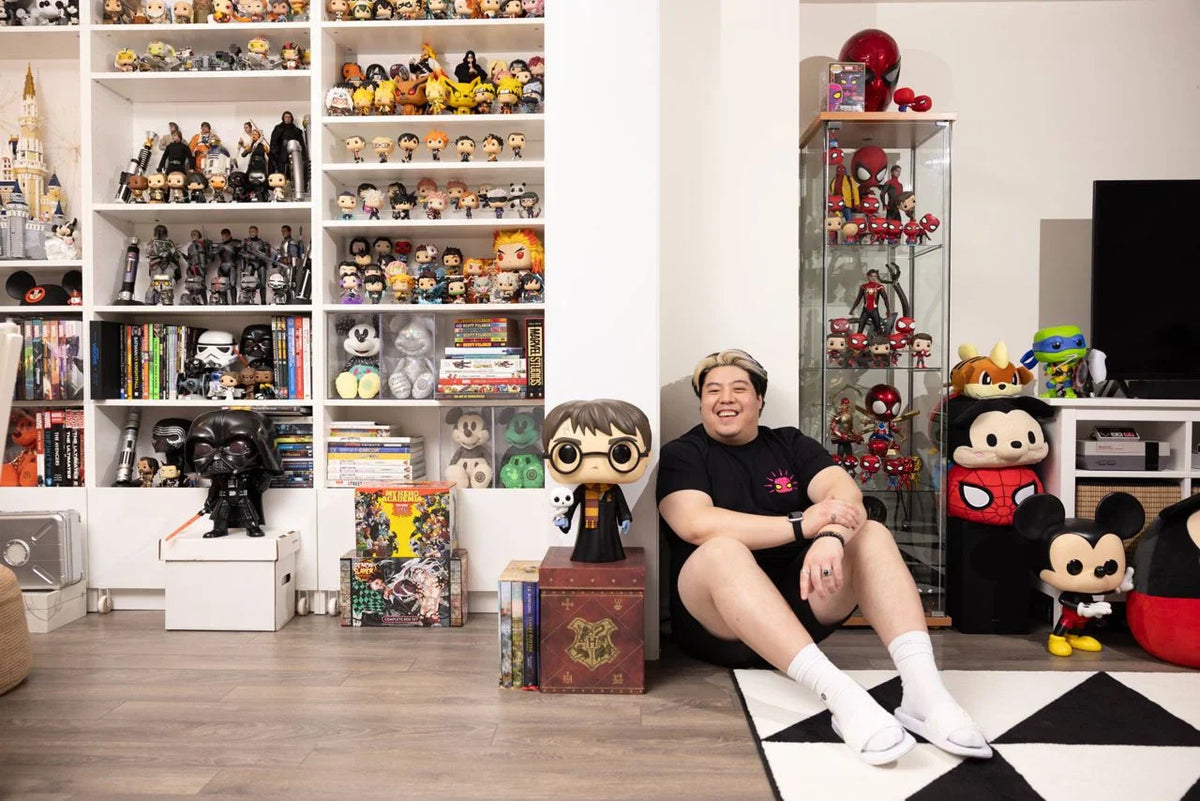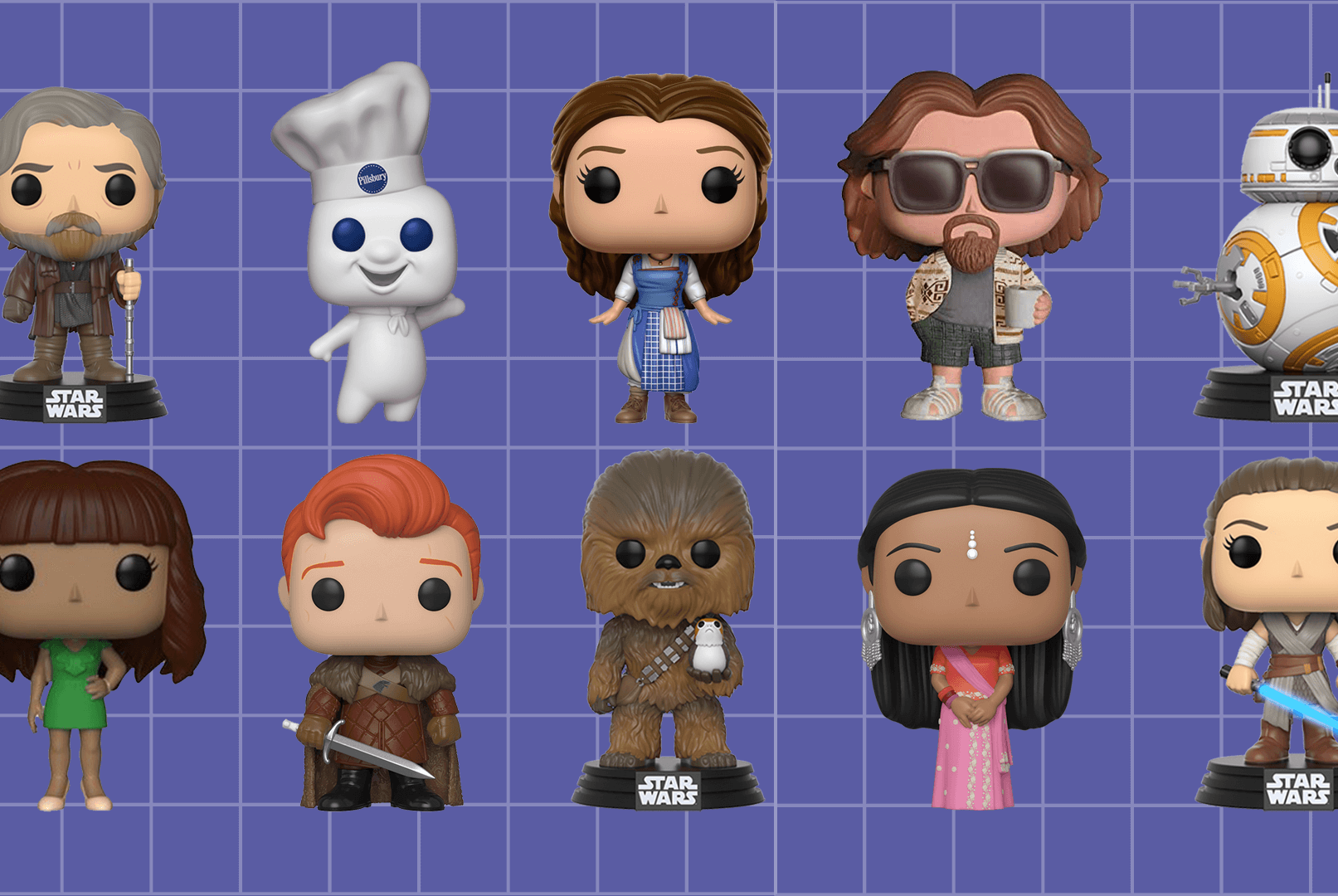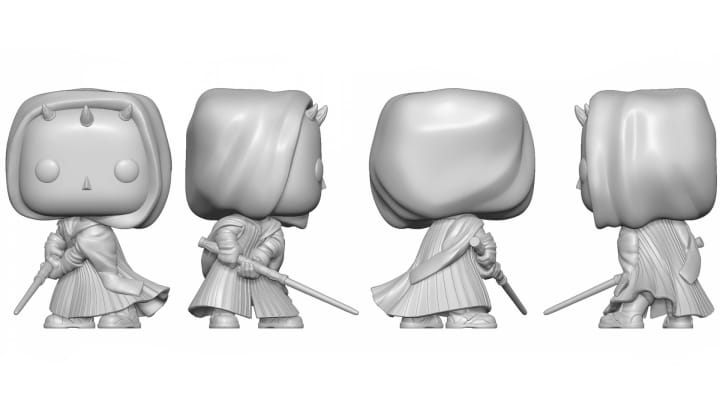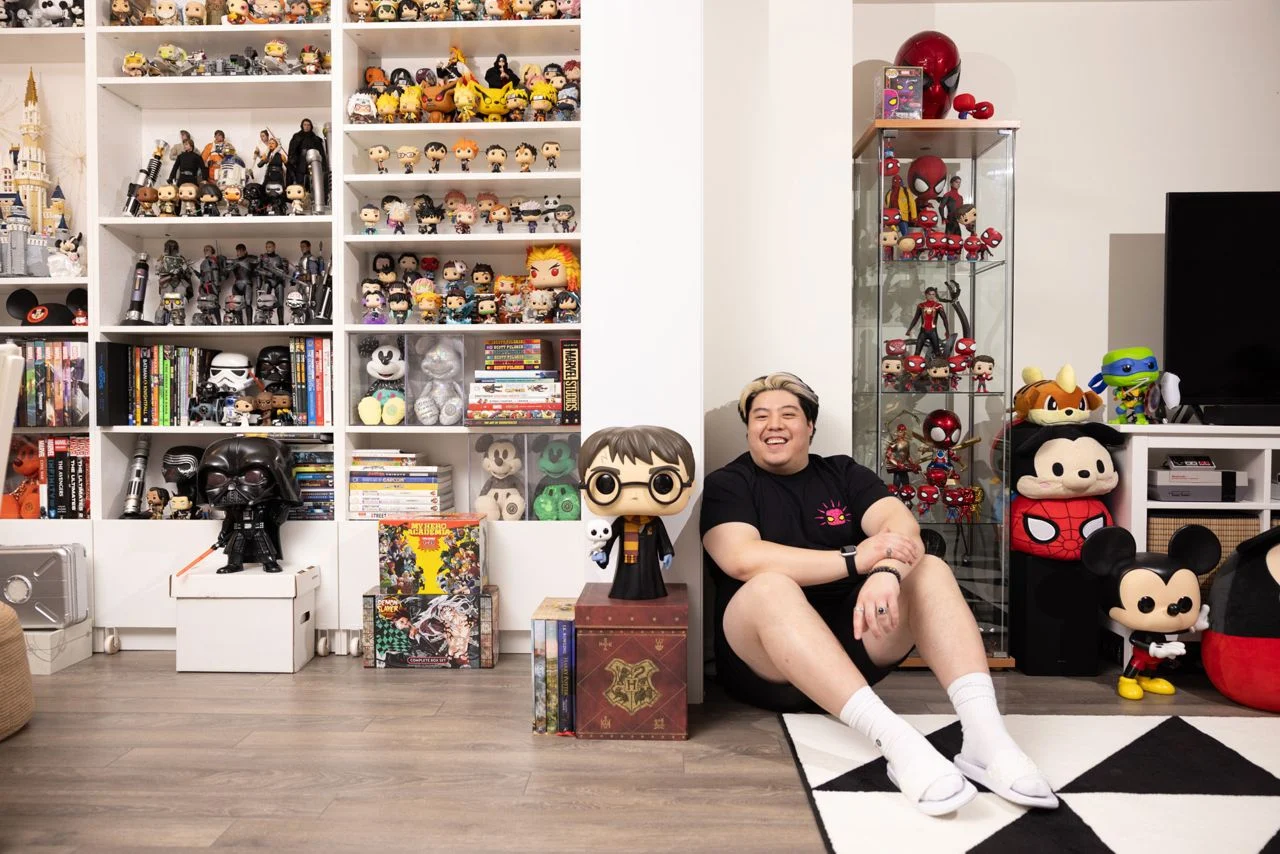
Uncovering the Fascinating Language of Funko Pop
|
|
Time to read 3 min
|
|
Time to read 3 min
Designing Cuteness:
The Aesthetic Language of Funko Pop

Funko Pop figures are a unique cultural phenomenon that have garnered worldwide popularity due to their distinctive and highly recognizable design features. This article provides an in-depth examination of the core design elements of Funko Pops, focusing primarily on their oversized heads, minimalist eyes, and simplified body proportions. These features contribute significantly to their appeal as collectibles and cultural icons.
The most striking characteristic of Funko Pops is their oversized heads, which are disproportionately large in relation to their bodies. This design choice is deeply rooted in the tradition of "chibi" aesthetics from Japanese popular culture, where exaggerated proportions—especially large heads and eyes—are used to evoke cuteness and heighten emotional appeal. The oversized heads serve to amplify the characters' visual impact, making them immediately recognizable even in simplified form. This approach also enhances the expressiveness of the figures, despite the minimalist detailing in facial features. The large heads give the figures an approachable and playful presence that attracts a wide range of collectors and fans across various demographics.

This design choice is deeply rooted in the tradition of "chibi" aesthetics from Japanese popular culture, where exaggerated proportions—especially large heads and eyes—are used to evoke cuteness and heighten emotional appeal.
Complementing the oversized heads are the minimalist eyes, which are typically simple black dots without additional detail such as pupils, eyelashes, or expression lines. This minimalist approach to the eyes abstracts the figure’s expression, allowing each character to retain a universal and approachable quality. The simplistic eyes create a form of emotional neutrality that invites personal interpretation and connection, which is often a hallmark of successful collectible designs. This abstraction also enhances the versatility of the figure, allowing it to seamlessly represent a wide range of characters from different franchises without complex facial nuances that might limit general appeal.
The body proportions of Funko Pops further contribute to their iconic style, characterized by small, stubby bodies with minimal articulation and simplified anatomical details. This simplification emphasizes the contrast with the oversized heads and aligns with the overall chibi aesthetic. The squat and simplified body design makes the figures appear more toy-like and collectible, reinforcing their status as objects of both nostalgia and contemporary pop culture fandom. The limited body detail serves also to maintain production efficiency while allowing for the inclusion of characteristic accessories or costumes that reflect the personality of each character.
The manufacturing process of Funko Pops typically involves digital sculpting using tools such as ZBrush to create high-resolution, digitally detailed models. These models are then translated into physical form using injection molding techniques, primarily with polyvinyl chloride (PVC) plastic. This process allows Funko to produce detailed yet affordable figures at scale, achieving a balance between visual fidelity and cost-effectiveness. Injection molding facilitates the replication of the precise oversized head and minimalist features that define the Funko Pop aesthetic.

In addition to aesthetic considerations, the design of Funko Pops also speaks to broader psychological principles. The exaggeration of childlike proportions aligns with the psychological concept of "baby schema," which elicits affectionate and protective responses in humans. By emphasizing large heads and eyes, the figures tap into innate responses that make them appealing across age groups and cultures. This psychological resonance helps explain Funko Pops' mass appeal and their ability to foster emotional connections among collectors.
Furthermore, the design simplicity and iconic form have facilitated Funko Pops' role as vehicles of cultural representation. They cover a vast array of characters from popular media, including movies, TV shows, video games, and sports. The standardized and minimalistic design language provides a canvas for infinite reinterpretation, allowing diverse franchises and characters to be unified under a single collectible style without losing their unique identities.
Overall, the design features of Funko Pops—oversized heads, minimalist eyes, and simplified bodies—are crucial to their identity and success. These elements combine to create a visually distinctive, emotionally engaging, and universally appealing collectible. The synthesis of traditional design inspiration with modern production techniques enables Funko Pops to remain a dominant force in the collectibles market while continuously engaging new fans worldwide.
This focus on key design elements offers insights into why Funko Pops have transcended mere merchandise to become cultural icons that simultaneously engage nostalgia, aesthetic appeal, and fan identity. Their design is not only a practical manufacturing choice but also a carefully crafted visual language that speaks to broader cultural and psychological dynamics in contemporary pop culture collecting.

